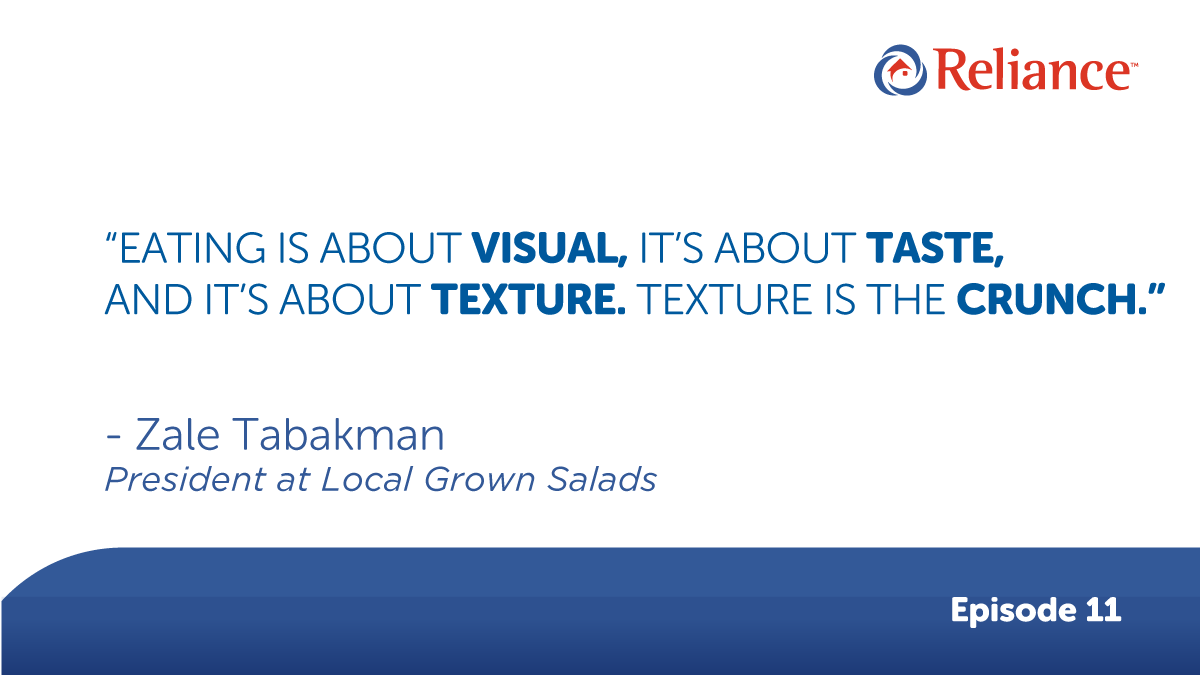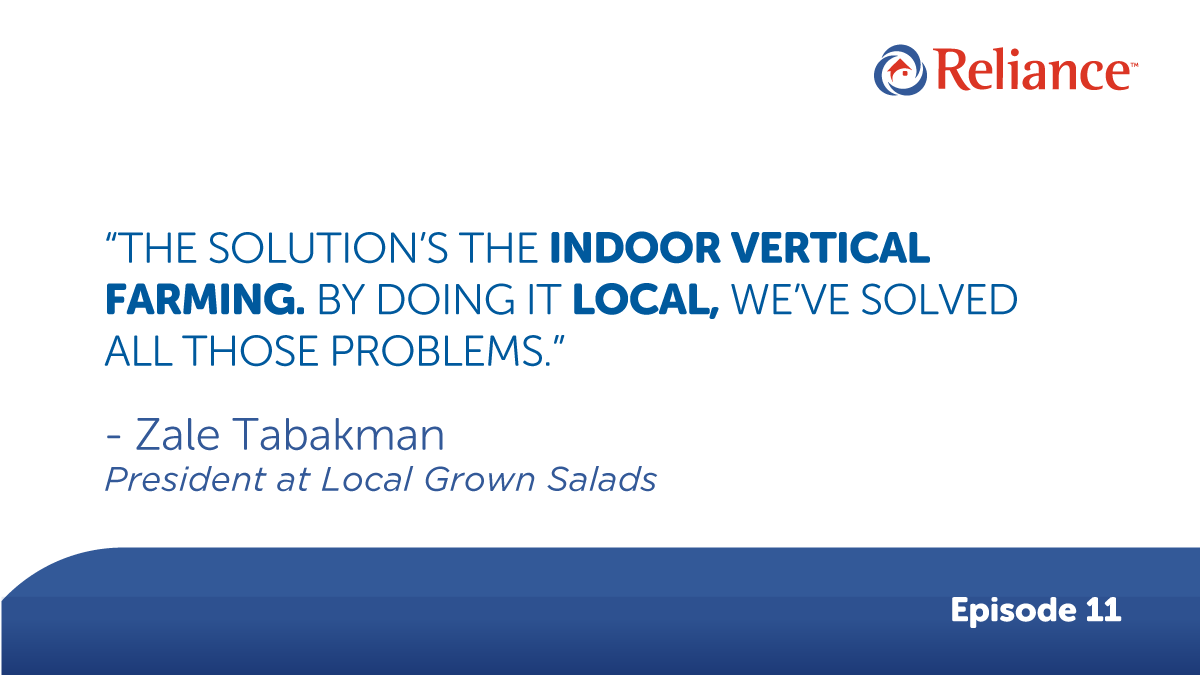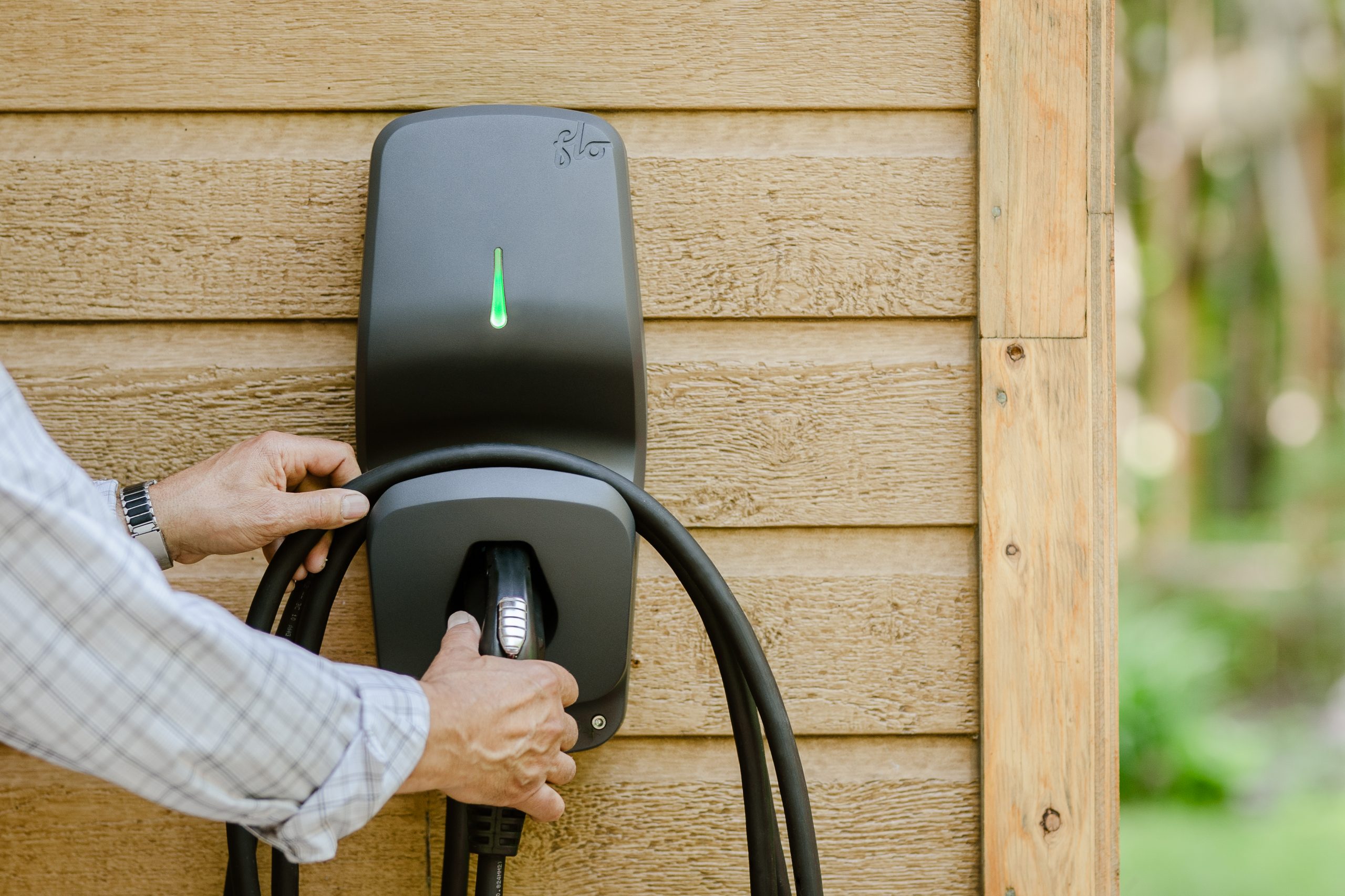Air Quality Control & Indoor Vertical Farming4 min read
Reading Time: 3 minutesAir Quality Control & Indoor Vertical Farming
Most everyone in North America has had this experience: we bought some produce only to have it go wimpy the very next day. The solution to this financial and food waste?
Indoor vertical farming.
Recently on Business Optimization, we had a chance to chat with Zale Tabakman, President at Local Grown Salads, about the problem, solution, and technology that inspired his business.
Zale discussed:
- The logistical problems behind low-quality North American produce
- Indoor vertical farming to grow plant muscle
- Challenges and technological solutions to controlling air quality
Let’s dive right into the conversation!
The problem of North American produce
The second that you harvest a vegetable in the field, it has about 14 days of shelf life. Most North American produce comes from Arizona, California, and Mexico — but must be shipped across the entire continent.
Imagine this journey of some celery from Mexico City to Toronto:
- Harvested
- Shipped 4,100 miles
- Sits on the dock
- Sits on the shelf
- Purchased
- Sits in the refrigerator
- Expired before use
By the time the Canadian is ready to cook, the celery is no good anymore. This is the argument for locally grown produce, and it’s a persuasive one.
Zale became aware of the need on two levels: by working with chefs dissatisfied with available produce and by wanting to feed his own household fresh, healthy foods.

Indoor vertical farming
What it isn’t
It’s not field farming, obviously.
And it’s not a bunch of vegetables in bunk beds inside a greenhouse, either.
What it is
Indoor vertical farming looks like a wall of vegetables in towers. Water circulates from the top to the bottom of the wall, and the plants grow out towards the LED lights that provide both light and heat (70,000 lumens, to be exact).
There’s only about twelve inches between the root of the plant and the light, and furthermore, the plants are producing a lot of humidity.
HVAC to the rescue. Local Grown Salads uses a split HVAC system to replicate the job of wind in a field as well as reduce heat and humidity within the indoor vertical farm.
Some quick science
Let’s get scientific about growing for a moment.
Heat control is a material problem in indoor vertical farms because, as you may be aware, hydroponic plants have less muscle (fiber) and tend to wilt easily. Well, adding heat to that recipe weakens the plants still further.
“Eating is about visual, it’s about taste, and it’s about texture. Texture is the crunch,” Zale said.
What we want in a cucumber is a nice crunch — the plant muscle.
By growing produce locally in a heat- and humidity-controlled environment, Zale has cut down all the time that produce spends in transportation and waiting for purchase.

Technical challenges of indoor vertical farming
Beyond heat and humidity, there are a couple of other problems that technology helps to solve in indoor vertical farming.
Air quality
By growing indoors, Zale can bypass the pesticides, herbicides, and fungicides that almost every other grower uses.
On the other hand, he has to keep positive air pressure, which is most familiar from the concept of a clean room. It means the air is always pushed out to keep impurities from entering the room.
Air speed
Depending on the type, age, and strength of a plant, it’s important to control the speed of the air.
To create different air speed environments means simulating a slow breeze when the plants are tiny or a fast breeze to strengthen their fibers as they grow. Air direction also matters, here.
Air filtration
Obviously, there are a lot of fans, ducts, systems, grilles, and filters involved in keeping such careful control over the air of an indoor vertical farm. How good they are matters to the success of the produce.
Future technologies
Zale mentioned two applications for the use of ozone:
- Ozone as air filtration — to seal a room and zap it with ozone to clean it
- Ozone as water filtration — to nourish or store vegetables in ozonated water to keep them fresher
Get in touch with Zale on LinkedIn.
Until next time!
This post is based on a Business Optimization podcast with Zale Tabakman. The views, information, or opinions expressed during the podcast series are solely those of the individuals involved and do not necessarily represent those of Reliance Home Comfort and its team members.
To hear this episode and many more like it, you can subscribe to Business Optimization here. If you don’t use Apple, you can find us here.



